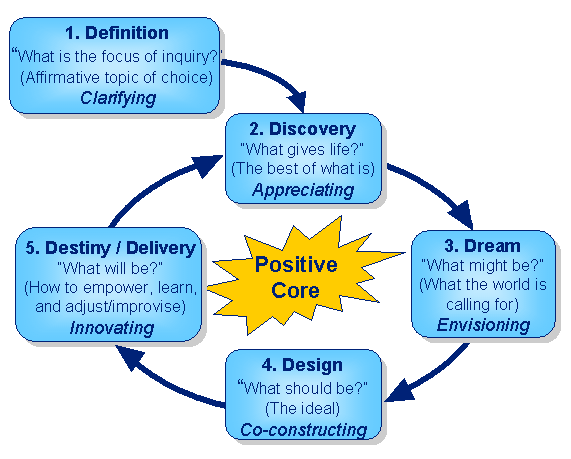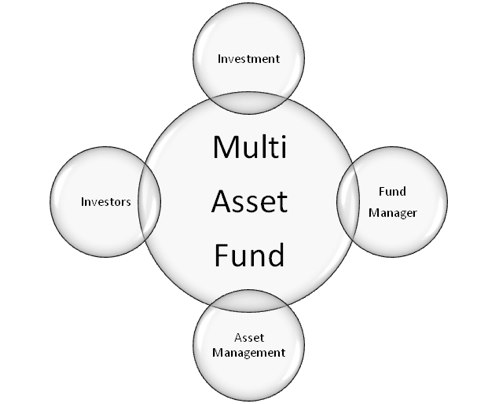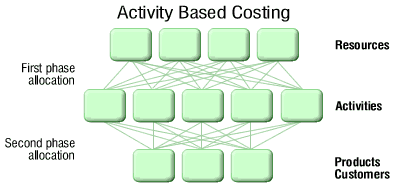Organizational Change Management
The purpose of this report is to analyse the case study on D2 which is an auto-components manufacturer undergoing major structural changes to minimize costs and implement innovation and technology. While managing the change, the organisation had to face different kinds of issues. Thus, the report would be identifying the issues and proposing relevant solutions and their implementation to manage change effectively, by using the 5D-Framework which comprises of definition, discovery, dream, design and destiny.
Definition
When a company undergoes change, there are a series of opportunities and challenges that it has to face. Change is not a onetime occurrence but rather could take years to be implemented. When an organisation is undergoing strategic change, it needs to re-formulate its mission and strategies and thereafter align all its business operations with the overall strategy (Cummings and Vorley, 2009). While managing strategic change, implementation is more challenging than just designing the change.
Lack of Communication Alignment
Therefore, one of the primary issues witnessed in the D2 case was that the management would have difficulty in implementing the change due to improper communication channel used for communicating the strategy to the rest of the employees. Apart from this, having a balanced strategic change is also a significant challenge since in order to achieve the balance, the organisation needs to assure that its internal management and resources are aligned with each other and with the external opportunities (Bordum, 2010).
Environmental Pressures
Apart from this, environmental pressures are another reason why organisations undergo change. In order to be aligned with the environment, there is a certain organisational structure and a strategic positioning required. One of the key issues in the case was that there has been an outpaced growth of technology over the years and in order to meet that pace it needed to undergo significant innovation and get rid of the obsolete technology. This required greater strategic flexibility which then bore a cost to the organisation since the employees resisted the change and job insecurity arose (Skordoulis, 2013). Moreover, owing to the environmental pressures, it was significantly cutting costs and thus, had to face a trade-off between lowering costs and smooth flow of work. The smooth flow of work would be disrupted since to lower costs, it would have to shut down some of its manufacturing facilities that are not producing enough and would have to redeploy staff to other geographic regions which would require a lot of planning and control. According to Alessa and Kliskey (2012), responses to environmental change management is required which can be done through change agents. These agents can be of three types: the initiators, the supporters and the opportunists. These environmental change agents would assure that the company’s strategy is in correspondence with the changes in the external environment. In the case of D2, the changes in technology were an environmental pressure which required a change agent to manage it effectively and efficiently.
Leadership Issues and Resistance to Change Management
Change management can be of many types, varying from a change in structure to a change in culture, leadership style, operations, systems and strategy. At times one change may lead to another change and while doing so, organisations encounter a number of issues. Another key issue evident in the case was the autocratic leadership style and a centralized management as a result. In identifying the change management areas, the management itself first made decisions and formulated the strategy, and then later informed the employees. As the case stated that the decision was yet to be announced and the workers in UK might be shock to hear it since the firm had made heavy investments in the manufacturing plants. Moreover, while redeploying the employees from one geographic region to another, cultural issues might also be faced which would require heavy investments in training. Thus, a greater resistance might be expected from the employees since they were not part of the decision making process and the organisation’s interests might then be in conflict with the interest of the employees (Banutu and Shandra, 2007).
Trade-off between managing change management and maintaining core competency
Lastly, and most importantly, since the company’s operations are dispersed geographically and one of its core competencies is the pace and quality of its product development, in change management , the company might lose out its current strategic position or the core competency it has, thus, assuring that the pace and quality product development remains the same while re-structuring its manufacturing operations, would be very challenging for the company. Furthermore, change management is not following a planned approach. This might cause D2 to lose out its competitive position in the market which would then be difficult to re-obtain since by focusing on cost reduction rather than value addition, maintaining the sustainability of operations is less likely to happen.
Leadership Issues and Employee Resistance to Change
Discovery
The underlying problem chosen for in-depth discussion is the employee resistance to change and the leadership issues in bringing about the change. As stated in the case, D2 required an urgent need for change management therefore it cannot go slow in bringing about the change and would require major transformations in its structure and human resource. While deciding which operations to shut down and which ones to expand, it has been taking into account the external environment and the returns it would get out of it. However, in doing so, it has neglected the reaction that might be expected from the employees, and which could majorly impact and hinder any change management process that happens in the organisation. Resistance to change usually occurs when employee needs are not addressed; their goals and organisational goals are not aligned; there is communication gap between the different hierarchical levels as well as in horizontal communication; when there is downsizing and mistrust is created among employees; when there are major cultural issues to be faced as a result of change management ; and when employee participation in decision making is lacking (Bovey and Hede, 2001).

Furthermore, when the leader fails to apply a transformational leadership style where he articulates the vision and re-defines the strategy, the resistance increases further as employees are unclear about the goals and objectives they need to achieve as individuals as well as collectively (Eisenbach et al., 1999). The management needs to keep a balance between the organisational needs and the human needs since ultimately it is the human resource that needs to implement the change (Griffin and Moorhead, 2011). The key issue in the case of D2 was that a feeling of mistrust and insecurity was occurring not only in the U.K. region where it plans to close its facilities but also among the employees working in other subsidiaries located in Spain since the change management process is not communicated effectively and the decision making authority is vested in the hands of a few senior managers indicating that bureaucratic leadership style is more evident in the organisation which means that the increased level of formality between the management and the employees and the lack of communication would result in a decrease in employee morale, and hence, a decline in performance.
In order to address the issues, the leadership styles need to be changed. According to Bamford and Forrester (2003), using a middle-out approach would be of significant advantage in addressing the issue. This would involve giving the middle management the authority to lead the change under the supervision of the top management. In doing so, employee needs would be addressed in a better form since the line managers are more closely linked with the operational level staff and thus would be able to provide adequate feedback to the top management of how to create a link between the overall strategy and the needs addressed. Greater teamwork and participation of the workers would also be required to increase their motivational level and making the flow of communication more efficient. Leadership issues are also one of the reasons why organisations fail in managing the change. Uncertainty often accompanies change and as a leader, one needs to minimize the uncertainty levels and create an environment of greater employee commitment and trust. According to Ahn et al. (2004), globalization and change of technology at an accelerating pace requires that effectiveness in leadership has become immensely important, which is demonstrated through the leader’s adaptability to different management styles that involve greater coordination and engagement among all members of the organisation. According to Ashman (2012), ‘redundancies have become an unwelcome necessity across all sectors of the economy’, and while strategy and procedure in change management are important, the third element, psychology, is not given much attention which focuses on how employee emotions need to be dealt with to prevent any resistance to change management. Thus, this requires that to avoid such issues the message is communicated accurately while the sensitivity of such messages is taken into account adequately (Ashman, 2012).
Dream
One of the ways in managing the issues is to adopt a planned change management approach. The 3 step model of Lewin is applicable here which suggests that the organisation needs to plan change management in three stages: unfreezing, moving, and re-freezing (Burnes, 2013). In the case of D2, a sense of urgency was created and the change was seen more as an emergent one rather than a planned one. However, to make the change more sustainable, carrying out the planned approach would decrease employee resistance, since the unfreezing stage would first help in abandoning the old ways of doing work and preparing the employees for change. For instance, D2 could have addressed the issue of mistrust among its employees in other regions as well as in U.K. by defining the need for change and how it would benefit the organisation as a whole. It should then also point out the alternative employment opportunities available and how these would be a better platform for their growth. The moving stage then would involve applying the change process such as re-structuring, changing leadership styles, re-articulating the vision or changing the strategic position. This is when D2 should start shutting down its facilities and redeploying the staff where expansion is happening. The moving stage would then be followed by the re-freezing stage where the new practices would be adopted in a more permanent basis by providing training and aligning the new behaviors with the organisational strategy and culture (Bamford and Forrester, 2003).
Another potential solution of managing organisational change would be to conduct training programs and adopt situational leadership style. The situational leadership theory states that there is no one best style of management and the leader would have to either adopt a relationship-oriented style or a task-oriented style depending on the situation being faced (Griffin and Moorhead, 2011). Similarly, motivational levels of employees would also have to be taken into account and the purpose of the chosen leadership style would be to boost employee morale and assure that they have a positive attitude towards the change.
Also team building should be the ultimate focus of the organisation. This should involve self-managing teams, cross-regional/cross-cultural teams and cross-functional teams (Sisaye, 2005). The purpose of having such teams would mean greater diversity and flexibility among employees as well as greater coordination between different divisions and manufacturing facilities. By having cross-cultural teams, the employees would be more familiar with the cultural differences between Spain, France and U.K., thus, any issues arising as a result of change in culture could be better handled through cross-functional teams. The team performance model suggests that in order to create a team there needs to be orientation, trust building, goal clarification and commitment; and in order to sustain that team there needs to be implementation, high performance and renewal (Cooperrider and Dan Whitney, 2001).Therefore, the employees and the management should get involved in formulating the teams before the change management process and since this change is more about implementing new technology while cutting down the costs, the teams may focus on how the technology can be implemented. This would also be accompanied with extensive training to avoid any ambiguity among the employees.
The firm’s strategy of achieving cost leadership while maintaining the pace and quality of product development requires that it should, it focuses on value addition. This would mean cutting down costs by minimizing any wastage of resources and streamlining processes. At the same time, it would also be adding value through the innovative tools and technology used. This strategy would have to be defined by the leader after taking employee opinion and feedback using the bottom-up approach and would then have to be implemented across the organisation.
Design
In order to implement the proposed solutions, careful planning and formulation would be required. The use the planned change model can be implemented by having a leader who first identifies the potential areas that require change in terms of employee attitude and behavior Also, while addressing the need for change, the leaders should first conduct a field force analysis to identify the factors that are for and against the change (Schwering, 2003). The leader could then use the forces that can help in driving change as an advantage. This would include the consumer demand for more innovative auto components, availability of technology, upgraded technology in the other two manufacturing facilities and the identification of a new strategy. The drivers against change management would include employee resistance due to increased mistrust, decrease in morale in case of deployment and fear of exploring the new methods of working. Thus, once the forces are identified, in order to overcome any barriers, training programs should be conducted throughout the change process, that is, the unfreezing, moving and re-freezing stage. These training programs should involve two way communications which would mean delivering the new company strategy to the employees and also taking their feedback on what concerns they have and how they think it can be improved further (Hoag et al., 2002).
Apart from this, in helping leaders being aware of different leadership styles, leadership workshops should also be conducted. These might include assessment centres and activities where the management can be given different scenarios and asked to adopt an appropriate leadership style (Cummings and Vorley, 2009). The workshops would then be concluded with feedback and suggestions. Also while change management is being implemented, the performance should be monitored and measured more frequently in order to understand employee behavior and their progress. In case of teamwork as well, the leader would have to assure that there is no group think that could result in in-group conflicts, and the goals of the team are aligned with that of the organisation (Raza and Standing, 2011). The management would have to be more decentralized in its approach by practicing open door policies and being on the floor to address employee needs. The alternative employment opportunities available for the employees need to be clearly identified before the change process in order to conduct the implementation smoothly. Similarly, while communicating the new strategy to the employees, the opportunities available to them should be delivered first, which could act as a buffer to the disappointment they might have on hearing the shutting down of operations.
In order to cut down costs while maintaining the core competency, the organisation should align its operations with the new strategy. This would mean implementing change management simultaneously. The firm should first start expanding its operations in France by investing in new technology and setting up the production design, it should then plan out staffing requirements and communicate the strategy to the employees in the U.K. as well as Spain regarding how the expansion could help organisation grow and how the operations in U.K. might decline the overall progress of the organisation. Online video conferencing or virtual teams can also be formed where there could be cross-regional communication to assure that all its units are at the same pace and the goals of the organisation are communicated clearly across. Also by using internet as a platform for communication, organisation would be further saving on its time and costs in coordinating the teams.
Destiny
In implementing the proposed solutions, the possible limitations that might be faced include the heavy investment costs associated with training. This would conflict with the overall strategy of the firm of cutting down the costs. Therefore, in order to minimize the training costs, the management can focus on more informal ways of training such as in-house training where the costs of additional trainers and location can be saved. Similarly, the organisation could identify change agents who are trained and competent enough before the change takes place and then these agents could help other employees in carrying out the change (Griffin and Moorhead, 2011).
Furthermore, in identifying leadership styles, one of the factors that have been ignored is the number of cultural issues. For example, the effectiveness of relationship-oriented style is not only dependent upon the organisational situation but also on the culture where it is operational. There might be differences in terms of collectivism and individualism, and power distances (Kirsch et al., 2012). To overcome this limitation, the leader can identify the similarities in culture that can help employees adjust in the other two regions and make them aware of the differences to avoid any cultural shock.
While implementing the solutions, another possible limitation is the effectiveness of the feedback. Employees might be reluctant to speak up any negative feelings regarding the process or the feedback might be unstructured and more intuitive rather than formulized. To overcome this limitation, the management can take anonymous written feedbacks and then re-evaluate performance after the feedback is taken into account, in order to measure its effectiveness.
Thus, by strategizing the change process and aligning the structure, the culture and the processes with the overall strategy, implementing the change process would be more effective, reducing any potential resistance of the employees through greater involvement and empowerment in decision-making. Also by applying the three-step planned approach to change, the employee attitudes would be more positive towards change, removing any ambiguities that might exist regarding the strategic change.
References
Ahn, M.J., Adamson, J.S.A. and Dornbusch, D., 2004. From Leaders to Leadership: Change Management. Journal of Leadership and Organisational Studies, 10(4), pp. 112-123.
Alessa, L. and Kliskey, A., 2012. The Role of Agent Types in Detecting and Responding to Environmental Change Management. Human organisation, 71(1), pp. 1-10.
Ashman, I., 2012. A New Role Emerges in Downsizing: Special Envoy. People Management and Change Management, pp. 32-35.
Bamford, D.R. and Forrester, P.L., 2003. Managing planned and emergent change within an operations management environment. International Journal of Operations and Production Change Management, 23(5), pp. 546-546.
Banutu, M.B. and Shandra, M.T.B., 2007. Leadership and Organisational Change Management in a Competitive Environment. Business Renaissance Quarterly, 2(2), pp. 69-90.
Bordum, A., 2010. The strategic balance in a change management perspective. Society and Business Review, 5(3), pp. 245-258.
Bovey, W.H. and Hede, A., 2001. Resistance to Organisational Change Management: The role of cognitive and affective processes. Leadership and Organisation Development Journal, 22(7), pp. 372-382.
Burnes, B., 2013. Kurt Lewin and the Planned Approach to Change: A Re-appraisal. Journal of Change Management Studies, 53(8), pp. 111-134.
Cooperrider, D.L. and dan Whitney D., 2001. Change Management A positive revolution in change: appreciative inquiry, on Robert T. Golembiewski (ed.), The handbook of organisational behavior.2nd ed., New York: Marcel Decker.
Cummings, T.G. and Vorley, C.G., 2009. Organisation Development and Change Management. 9th ed. Mason: Cengage Learning.
Eisenbach, R. et al., 1999. Transformational leadership in the context of organisational change.Journal of Organisational Change Management, 12(2), pp. 80-88.
Griffin, R.W. and Moorhead, G., 2011. Organisational Behavior: Managing People, Change Management and Organisations. Mason: Cengage Learning.
Hoag, B.G., Ritschard, H.V. and Cooper, C.L., 2002. Obstacles to effective organisational change: The underlying reasons. Leadership and Organisation Development Journal, 23(1), pp. 6-15.
Kirsch, C., Chelliah, J. and Parry, W., 2012. The impact of cross-cultural dynamics on change management. Cross Cultural Management, 19(2), pp. 166-195.
Raza, S.A. and Standing, C., 2011. A Systemic Model for Managing and Evaluating Conflicts in Organisational Management Change. Systemic Practice and Action Research, 24(3), pp. 187-210.
Schwering, R.E., 2003. Focusing leadership through force field analysis: new variations on a venerable planning tool. Leadership and Organisation Development Journal, 24(7), pp. 361-370.
Sisaye, S., 2005. Management control systems and organisational development: New directions for managing work teams – Change Management. Leadership and Organisation Development Journal, 26(1), pp. 51-61.
Skordoulis, R.T., 2013. Strategic flexibility and change: an aid to strategic thinking or another managerial abstraction? Strategic Change Management, 13(5), pp. 253-258.




